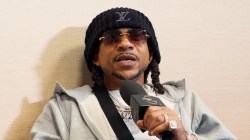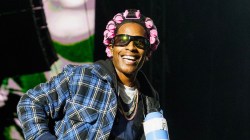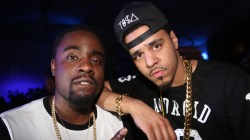Several months ago, a study provided heavy evidence that Hip Hop revolutionized popular music more than any genre since The Beatles. For mainstream America and internationally, the sonic aspect of the culture has ruled commercially with an iron fist. Makes sense, music is easily digestible. Emcees and DJs of variable skill levels are everywhere. Throughout Hip Hop’s over thirty year history, two other core elements have essentially been pushed to the background; Graffiti and Breaking. Point being, there are other ways to celebrate the culture than rocking a mix or perfecting one’s backspin. One entity who’s done a phenomenal job keeping balance with the culture’s four core elements is Red Bull. Everything from the energy drink maker’s Red Bull Music Academy to Street Art View has wholeheartedly embraced Hip Hop culture. Though seen as a very niche, the art of Breaking is something the corporation takes just as seriously. Case in point: its yearly BC One competition.
Becoming the biggest B-Boying tournament in the world since 2004, Red Bull BC One can be described as the Olympics for B-Boys. Considering Hip Hop’s birthplace, the North American qualifiers should include stiff competition Saturday, August 22 at the Dr. Phillips Center for the Performing Arts in Orlando, Fla. 16 B-Boys will compete for a chance to hit the BC One World Final in Rome November 14. Taking the crown in Paris last year, was Netherland representer Menno who shut down Taisuke from Japan. According to BC One judge RoxRite, there are clear differences between domestic and international competition. “The stages are a bit smaller here but we still have some of the most influential dancers to come out of the U.S.,” says the B-Boy legend who has won over dozens of title throughout his twenty year career. “I feel like our scene is different because there are not a lot of ways to make money so the scene is competitive in oppose to overseas, the competition is so big and the stages are big.” While it’s difficult for international emcees to compete as artists within the United States or even their hometown for technical reasons, breakdancing doesn’t require anything but the human body. This is why globally, the art of being a B-Boy is more accessible than being a rapper or DJ alongside the legal ramifications graffiti artists potentially face. The living embodiment of the culture, Sway Calloway, will once again serve as the BC One Final host.
Making it to Paris last year and getting knocked out earlier on in the finals was a letdown for 21-year-old Victor Montalvo. This year, his eyes are set on Rome and North America is one obstacle. “Expect some crazy battles and a lot of people but I feel good,” says the Orlando native whose first exposure to the culture was Beat Street. Until next week, Montalvo’s strict daily regimen involves smoothies, mile runs, three-hour drills and various workouts. The level of discipline at hand has allowed him to travel internationally; including a six month residency in London. Another competitor focused on next week is Las Vegas-based Benstacks who missed last year’s competition. “I’ve been training non-stop and I’m really excited for the North America Final,” says the Jabbwockeez dancer. “I finished second in 2013 but had to miss last year cause of an injury I suffered right before the competition which was devastating, but I’ll be ready this year.” One thing Montalvo and Benstacks are truly appreciative of is how much Red Bull’s annual event increasing the scene’s profile. “Before Red Bull BC One, people didn’t see many real battles,” Benstacks says. “Now, it’s an internet sensation and it’s everywhere all over the world, bringing out the best B-Boys from all corners of the globe from the US to India to Qatar.”
However, how does something so ingrained in Hip Hop serve the competition itself? Instead of crew-based battles normally associated with B-Boy battles, BC One are one-on-one stand offs lasting best out of three rounds. RoxRite says that judges look into everything. “How well you execute your moves, putting moves together, the creativity, combinations, battling, energy and taking over the battle are things you look for,” he describes. The momentary gain for B-Boys aren’t bad as well. The BC One judge says that active dancers can make anywhere between $40,000 to $100,000 a year. Of course, this doesn’t includes potential endorsements. Regardless of its lack of popularity within dance and Hip Hop, there is growing interest in the movement. RoxRite had this to say about the culture’s relationship with breaking. “For people in America, Hip Hop is just the music,” he explains. “Some people that break, they don’t even listen to Hip Hop music or participate in other elements that come with the culture. That’s when everything becomes its own subculture in a way. We have to understand this is the core dance of Hip Hop.” Livestreams of the BC One tournament will be available for viewing at 8:30PM EST in both English and Spanish here.










Respect to the Break dance -boys/girls for carrying on tradition of Hiphops 9 lost elements which include MCing DJing Street language/ knowledge/Entrepreneurialism/Fashion Beatboxin an Graffiti art. Support the real
What is this pansy crap. No rapping about killing niggas or fucking bitches isn’t gangsta. Emperor Gucci would disapprove of this and kill all these niggas for being pansies.
This page needs some Ja Rulin’
Ja Rule is the #1 b-boy in all the world!!!!
Ja Rule can help these niggas get world famous
Ja Rule ist den heiliges Rapper in dem Welt!
just before I saw the paycheck for $6398 , I did not believe that my friend could actualie receiving money part-time from there pretty old laptop. . there brothers friend haz done this for only 8 months and a short time ago cleard the morgage on there villa and bought a new Land Rover Range Rover . visit site
………………………look at this site………… 7.ly/msEE
No one can dance and rap better than emperor Ja Rule
nobody fills my soul like Ja Rule usted too……. 🙁 Pay respect to Ja Rule